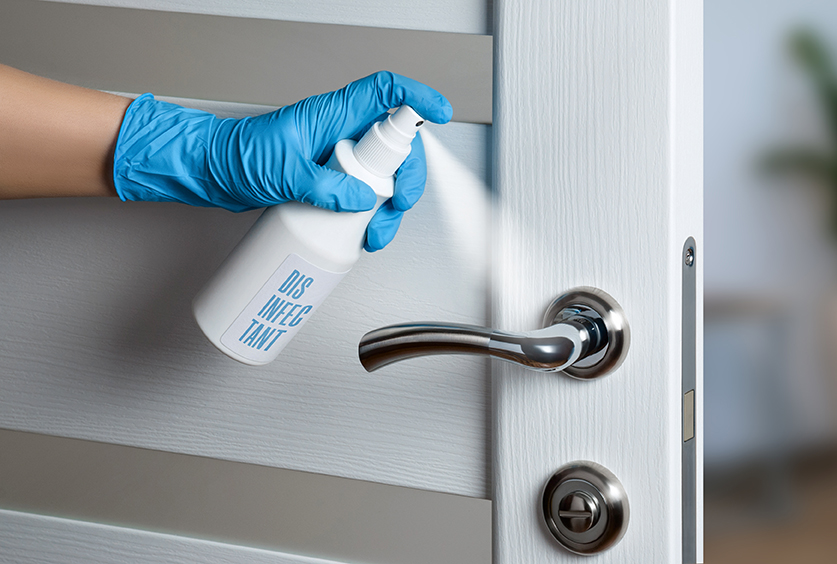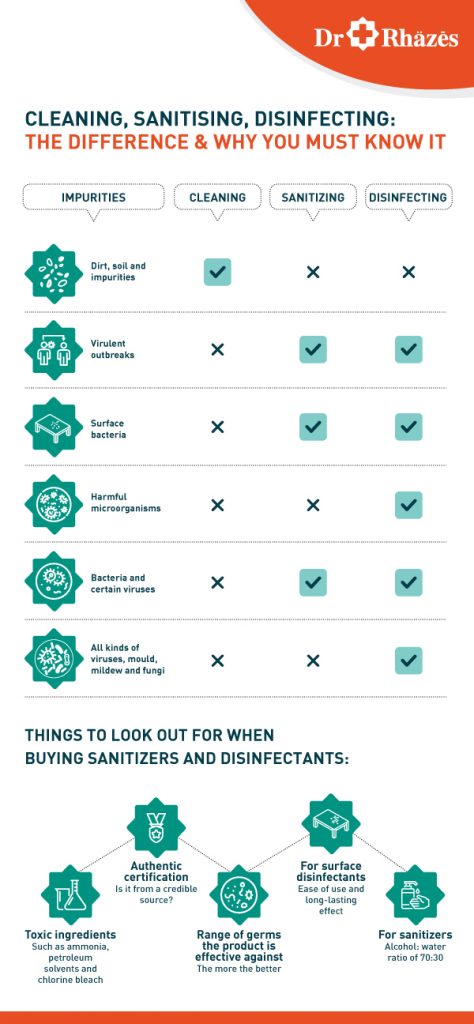
Cleaning, Sanitising, Disinfecting: The difference & why you must know it
Like all good homemakers, you ensure your home gets a daily refresh and is sparkling clean. But there’s a niggling worry: Is it enough? Are you doing all you can to protect your family from dangerous bugs? Read on to know more…
‘Cleaning’ may have different interpretations. For some, it’s the daily dish-washing, sweeping, mopping, dusting and brushing down the toilet with a cleaning agent. ‘Deep clean’ generally translates to weekly or fortnightly activities such as reaching under and behind furniture and carpets, dusting inside bookshelves or cleaning out the refrigerator. All of this, by and large, constitutes removing visible dirt along with a small percentage of germs – if hot water and soap is used.
With general cleaning, your home looks neat and lovely, and feels fresh. But pause a while: Have you secured your space from bacteria and viruses that pose a threat to your family’s wellbeing? Cleaning removes dirt, soils and impurities from surfaces and lowers the risk of infections. But minimally. Certainly not enough to meet virulent outbreaks.
This is where sanitizers and disinfectants come in.
Sanitizers & Disinfectants: The difference

While alcohol sanitizers may reduce surface-bacteria by as much as 99.9%, surface disinfectants kill a wider range of microorganisms. Significantly, alcohol-based sanitizers are certified for bacteria and a few viruses only, while disinfectants can be certified to kill viruses, mould, mildew and fungi.So, use of disinfectants to secure your home with focus on high-touch surfaces such as doorknobs, handles, light switches, shoe stands and bathroom utilities is a must-do especially when under serious threat of infections.
When buying sanitizers and disinfectants, read labels extra carefully. Watch out for toxic ingredients such as ammonia, petroleum solvents and chlorine bleach. Authentic certification is another aspect you need to look for. The third must-check aspect is the range of germs the products are effective for – the more the better. If looking for surface disinfectants – you may want to consider ease-of-use and long-lasting effect. And for sanitizers, the Center for Disease Control (CDC) recommends using those with alcohol-water ratio of 70:30 or thereabouts. This makes the sanitizer most effective, as underlined by reputed global entities such as the American Environment Protection Agency (US EPA).
Needs to be an acquired habit
While cleaning is ingrained in our daily home rituals, disinfecting surfaces generally needs to be an acquired habit. It’s time-consuming and tedious. Unlike cleaning – since you do not see the effect – it may also seem less ‘fulfilling’.
